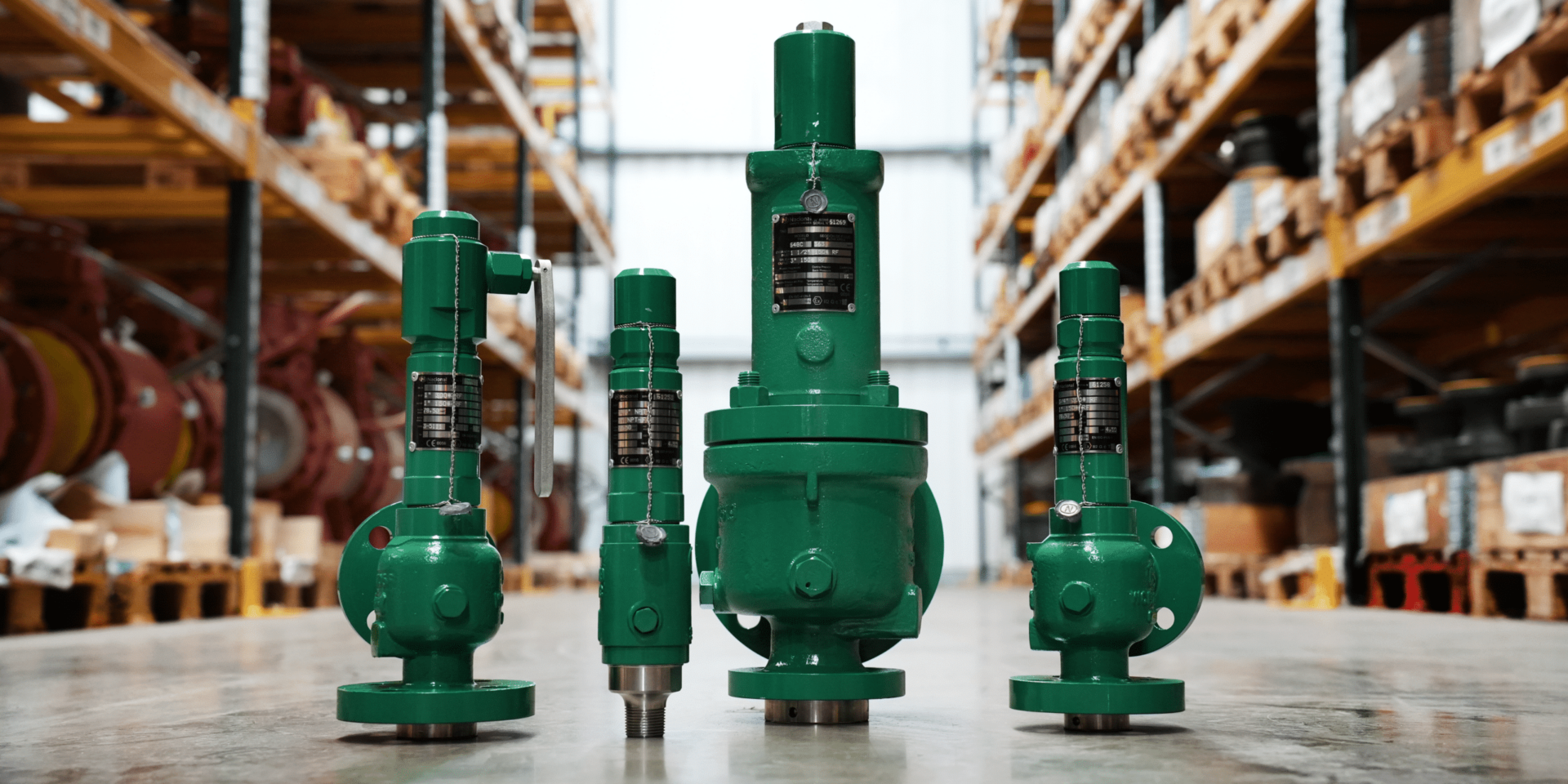Safety valves are a critical component in numerous specialist applications, ensuring systems operate within safe pressure limits to prevent catastrophic failures. One of the key specifications of a safety relief valve is its set pressure – the pressure level at which the valve opens to release excess pressure.
Understanding how set pressure works, its importance and how it is determined can help industries maintain safety, efficiency and compliance with regulations. In this article, we will tackle all of these areas to ensure you and your team have a comprehensive understanding of set pressure on safety valves.
What is Set Pressure?
Set pressure is the specific pressure at which a safety valve is designed to open and release fluid or gas from a system. This ensures that the pressure within a system does not exceed safe operating limits, which in turn protects equipment, personnel and the surrounding environment.
Once the system pressure exceeds the set pressure, the safety valve opens, releasing excess pressure until the system stabilises once more. After discharging, the valve reseats once the pressure drops to a predetermined level, known as the reseat pressure.
Why is Set Pressure Important?
Safety valves serve as a last line of defence against overpressure conditions. Without an accurately set pressure, your system could experience dangerous pressure levels that might lead to a range of major problems including:
- Equipment damage – Overpressure can cause pipes, boilers and pressure vessels to fail, leading to costly repairs or replacements.
- Safety hazards – Excessive pressure can result in leaks, explosions or fires, endangering workers and nearby facilities.
- Operational downtime – Pressure-related failures can halt production, leading to financial losses and project delays.
- Regulatory non-compliance – Many industries, including oil and gas, chemical processing, and power generation, must comply with strict safety regulations. Safety valves that have been incorrectly set may result in fines and operational shutdowns.
For a range of high-quality safety valves designed to provide reliable overpressure protection, manufacturers like Nacional offer various models suitable for different industrial applications.
How is Set Pressure Determined?
The appropriate set pressure for a safety valve depends on several factors including system design, operating conditions and regulatory requirements. Key considerations include:
1. System Operating Pressure
The set pressure should be high enough to prevent unnecessary valve activation but low enough to protect the system. Typically, the set pressure is selected at 10% above the maximum operating pressure to account for normal fluctuations without triggering the valve prematurely.
2. Maximum Allowable Working Pressure (MAWP)
MAWP is the highest pressure a system component can safely withstand. Regulations generally require safety valves to be set below the MAWP to ensure adequate protection.
3. Industry Standards and Regulations
Different industries must adhere to specific safety guidelines, such as:
- API 520 & 526 – Standards for pressure-relieving devices in the oil and gas industry
- ASME Section VIII – Pressure vessel safety regulations
- ISO 4126 – International standard for safety valves
Ensuring compliance with these standards is essential for operational safety and regulatory approval.
4. Type of Medium (Gas, Steam or Liquid)
The nature of the fluid being controlled affects the valve’s response time and performance. Gas and steam expand rapidly, requiring different valve characteristics compared to liquids, which are incompressible and exert different forces on the valve components.
5. Backpressure Considerations
Backpressure – pressure in the valve’s discharge side – can affect the operation of safety valves quite significantly. High backpressure can reduce the effectiveness of the valve, so it must be considered when selecting the appropriate set pressure and valve type.
Adjusting and Testing Set Pressure
To ensure reliability, safety relief valves undergo rigorous testing and calibration. Some common procedures include:
- Bench testing – Valves are tested in controlled conditions to verify they open at the correct set pressure.
- On-site testing – In some cases, valves are tested while installed to ensure they perform correctly under real operating conditions.
- Regular maintenance and inspection – Over time, system conditions change, and safety valves may need recalibration to maintain effectiveness. Regular servicing ensures long-term reliability.
Conclusion
Set pressure is a fundamental aspect of safety valve operation, ensuring equipment protection, regulatory compliance, and workplace safety. Understanding the factors influencing set pressure selection helps engineers and operators choose the right safety relief valves for their applications.
For industries requiring high-quality safety valves, Nacional’s safety valve range provides robust solutions designed to handle varying pressures and conditions, ensuring operational safety and efficiency. Our team at AC Valve Alliance are a renowned manufacturer and supplier of Nacional valves – so don’t hesitate to get in touch for your next safety valve project.



